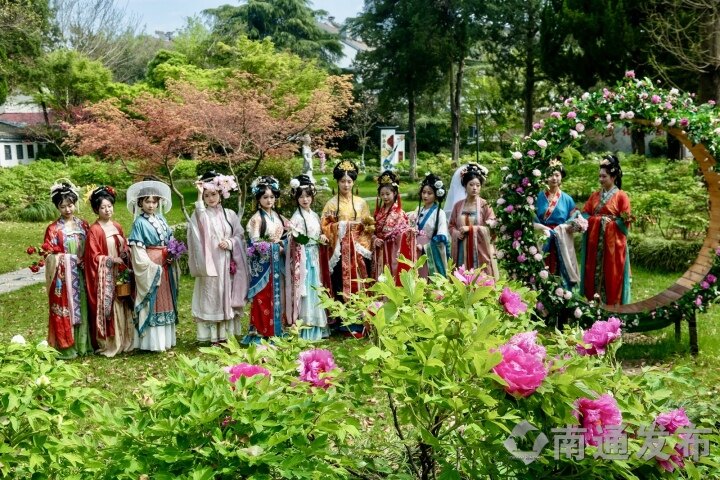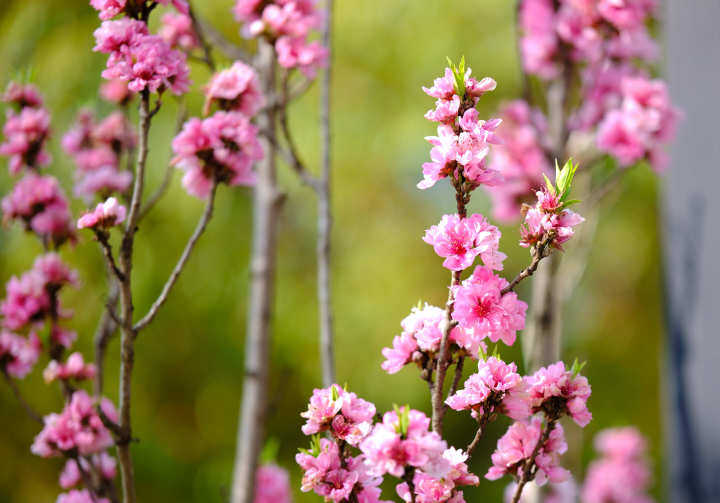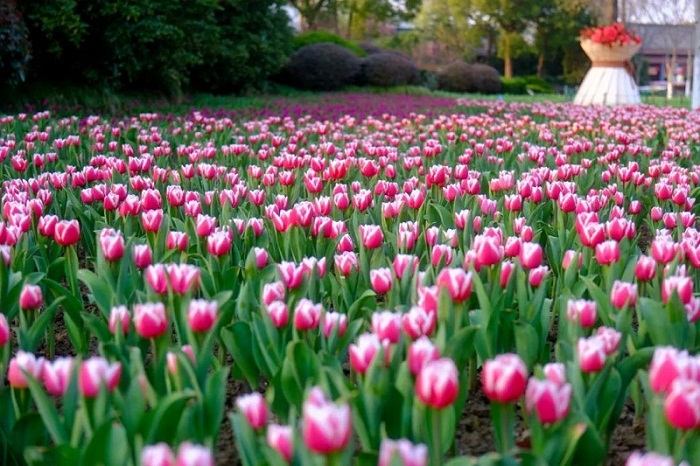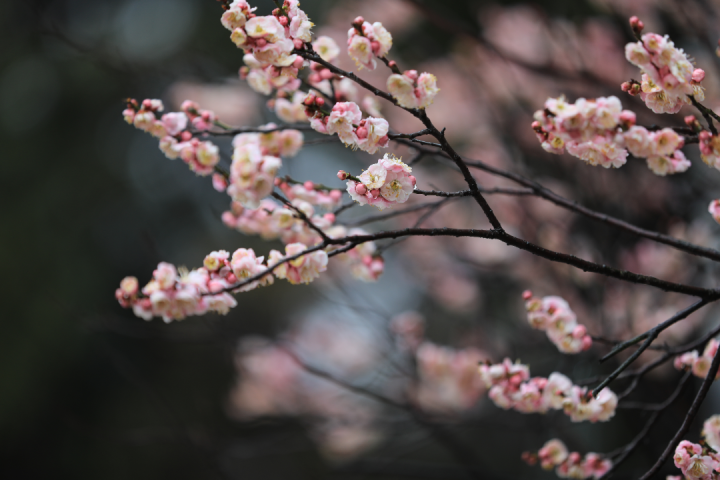Cleanup campaign brings numerous benefits
Editor's Note: In a series of reports, China Daily explores the pursuit of high-quality development nationwide.
Province invests in ecological, environmental projects
Wang Liang, who has lived near Yuzui Park in Wuxi, Jiangsu province, for decades, used to loathe summer, when he largely avoided visiting the park.
With a name that translates as "fish mouth park", the place used to be the site of a fish market selling fresh aquatic produce from Taihu Lake in the southern part of the Yangtze River Delta. However, the smell from the market was particularly bad in summer.
"It was not only the smell that bothered you. On rainy days, water ran everywhere in the market, so you didn't know where to set foot. The noise, the smell and the sewage made the place unbearable," said Wang, 60.
In 2021, an ecological restoration project was launched at the site to give local residents a modern wetland park with a clean lake and a variety of plants. Water birds now fly over the lake from time to time.
To create a sustainable ecological system, the newly-dug lake was connected to Taihu Lake to obtain more fresh water. Fish, shrimps, scallops and algae were introduced to the new lake for water self-purification.
Wu Yong, deputy manager of Jiangsu Jiangda Ecological Environment Technology Co, said: "Water ecology restoration involves far more than improving the quality of water. The landscape design should contain water features to provide a more harmonious experience between humans and nature."
The 18.4-hectare park now boasts a 460-meter-long boardwalk that stretches into the lake, a lakeside pavilion, and colorful footpaths winding their way through the plants. Many residents living nearby are now frequent visitors to the park.
In Nanjing, capital of Jiangsu, authorities in the city's Pukou district have invested about 300 million yuan ($42 million) in recent years on ecological restoration work on a 16-kilometer stretch of the Yangtze River that used to be home to the shipbuilding industry.
Yang Qingsong, a member of the Communist Party of China's working committee in Pukou's Qiaolin community, said a section of the Yangtze in the district used to be lined with shipbuilding factories. Locals complained constantly about the noise from machinery and also about water and air pollution resulting from ships being painted, and from rust removal work.
More than 300 sets of abandoned machinery have now been dismantled in the district, including gantry cranes and crushers. Some 1.7 million square meters of green land has been restored along an 11-km stretch of the river banks, which used to be covered in cement, sand and gravel.
"Work on Donglongshan and Simahe parks has been completed along the Yangtze, and the former shipbuilding belt has become a tourist attraction," Yang said.
Factories closed
In Nantong, a city located near the mouth of the Yangtze on the Yellow Sea, 203 polluting factories have been closed and 65,000 sq m of illegal buildings demolished in the Wushan area in recent years.
"Wushan", which translates as "Five Mountains", is a 6-km-long area along the Yangtze lined by this number of mountains. Now a national park, it is hard to imagine that the area was once a bulk-cargo port with piles of sulfur and iron ore stacked in the open air.
In 2016, the authorities in Nantong launched ecological restoration projects for the five mountains and the riverside areas, which were home to 70 percent of the city's provincial-level industrial parks and 85 percent of its colleges and research institutions.
They chose restoration of the Yangtze's ecological system over economic concerns — canceling two chemical parks along the river, closing many riverside chemical factories, and restoring thousands of kilometers of green land.
After years of hard work, the forest coverage rate in the area has reached 80.83 percent, and Langshan National Forest Park has been established in the locality.
Shao Wenjian, deputy director of Lanshan Tourist Resort's management office, said researchers have found 1,243 types of plants in the forest park. Natural science museums, water tourism projects and several celebrity homes in the area will open to the public soon.
Many such restoration projects have been carried out in all 13 major cities in Jiangsu.
Authorities in the province, which has a population of 85.15 million and covers 107,200 sq km, have restored 81 km of land along the Yangtze in recent years as they closed 3,876 chemical factories in the area, data from the Jiangsu Department of Ecology and Environment show.
More than 76,000 hectares of trees have also been planted, while water quality on the Jiangsu section of the Yangtze has stood at Grade II (the second-best level in China's five-tier water quality system) for five years, and no large-scale algal blooms have been reported in Taihu Lake for 15 years, the department said.
Yin Rongyao, the department's deputy director, said the province values environmental protection highly and has done a great job in ecological restoration despite facing enormous pressure and challenges.
"Jiangsu ranks among the top three provinces and municipalities nationwide for thermal power generation, steel and cement production. Its production of raw pesticide materials and dyes accounts for more than 40 percent of the total in China," Yin said.
"As the province with the smallest per capita land area in the country, the intensity of emissions from major pollutants per unit area is about five times that of the whole country."
He added that Jiangsu has closed more than 4,600 low-end chemical factories, 25 chemical parks and 57,000 polluting companies.
Meanwhile, the province's GDP has risen from 9.32 trillion yuan in 2018 to 12.29 trillion yuan last year.
The department said the annual average concentration of PM2.5 in Jiangsu has fallen by 33.3 percent in five years.
Last year, the PM2.5 concentration was 32 micrograms per cubic meter, marking the ninth consecutive year of decline, while the number of days with good air quality has risen by 5.2 percent in the past five years. Last year, 81.3 percent of days had good air quality in the 136 villages in which air quality monitoring was conducted.
Some 91 percent of surface water examined in a national monitoring program in Jiangsu last year stood at or above Grade III, which means it is suitable for people to drink or raise aquatic products. No areas of surface water were classified as Grade V, which is only good for use in farmland.
"The level of environmental satisfaction among the public in Jiangsu has risen for five consecutive years, reaching 93.6 percent in 2021," Yin said.
Funding allocated
Since 2013, the Jiangsu Department of Ecology and Environment has allocated about 15 billion yuan for cities to protect the environment, and for ecological restoration work.
The department has completed a biodiversity survey of 80 percent of Jiangsu's counties — recording a total of 6,903 animal and plant species, including 94 listed under national key wildlife protection measures.
In recent years, the authorities in Jiangsu have released details of more than 23,000 environmental protection cases, detained about 5,800 suspects, and issued 85,000 administrative punishment decisions, with fines totaling more than 7.6 billion yuan.
High technology and new energy enterprises have been welcomed in Jiangsu to reduce energy consumption and carbon intensity.
For example, 26 offshore wind farms had been established in Nantong by the end of last year, with a total installed capacity of 5.98 million kilowatts and a cumulative power generation of 14.78 billion kilowatt-hours.
Qian Tizhi, deputy general manager of Nantong Yangkou Huangang Investment and Development Co, said the city's wind power industrial park has attracted many new energy manufacturing industries, such as those specializing in wind, lithium and photovoltaic power.
"Their products can be shipped easily to other places, as the production bases are only a few kilometers from the port. As a result, abundant offshore wind resources can be quickly integrated into the grid," he said.
Before Xiaoyangkou Wind Power Port was launched at the start of 2017, transporting wind turbine blades was hard work, as a single blade could be as long as 110 meters and weigh as much as 45 metric tons.
As the nation's first dedicated port for wind power, it has shortened the delivery time for such blades from Nantong to neighboring cities from one week to a few hours.
This year, Jiangsu's energy consumption per unit of GDP has fallen by 36.8 percent compared with 2013, while the province's carbon intensity has declined by 41.5 percent, data from the Jiangsu Provincial Party Committee's research office show.





 TRANSPORTATION
TRANSPORTATION EDUCATION
EDUCATION HEALTHCARE
HEALTHCARE USEFUL NUMBERS
USEFUL NUMBERS